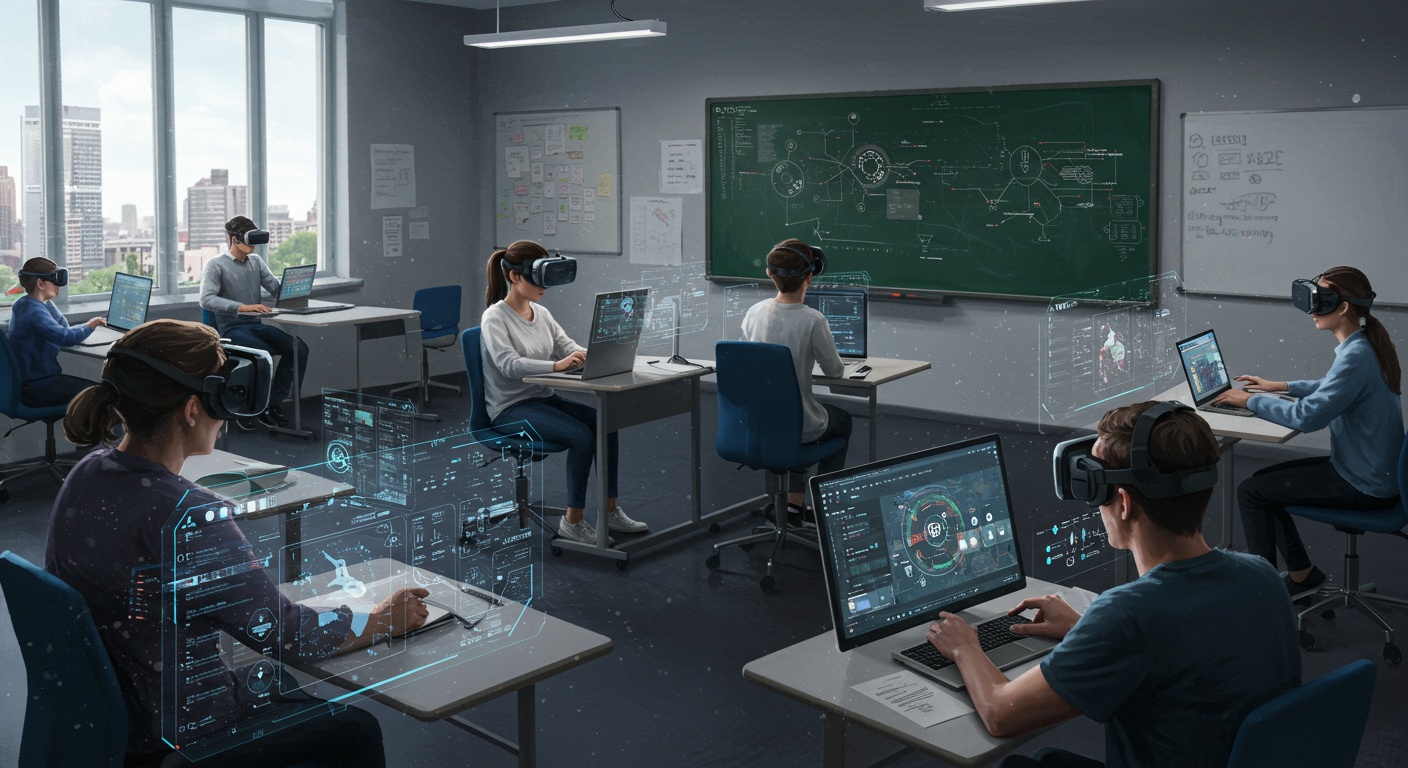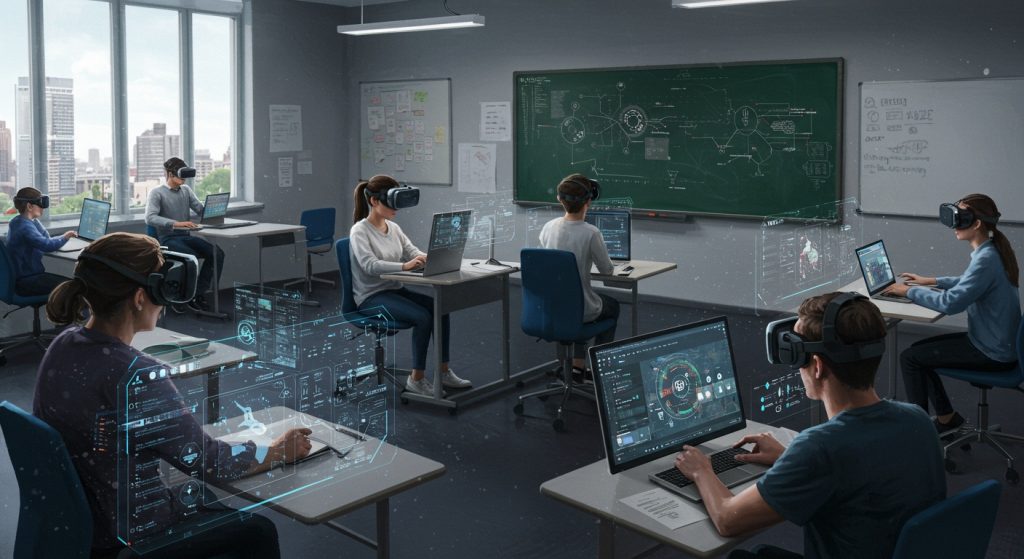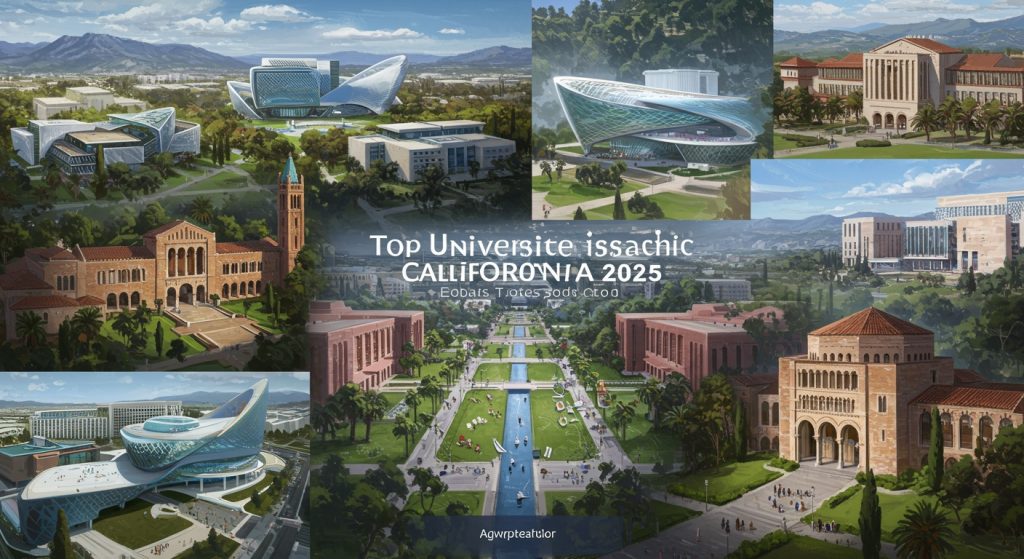State universities are no longer ivory towers; they’re dynamic engines adapting to a rapidly evolving world. Personalized learning platforms, driven by AI analytics like those piloted at Arizona State University, are tailoring curricula to individual student needs and accelerating degree completion. We’re seeing a surge in micro-credentialing programs, validating specific skills and attracting a diverse student body seeking just-in-time knowledge. Augmented reality is transforming traditional labs, offering immersive experiences in fields like medicine and engineering at institutions such as the University of Michigan. The future of learning within state universities hinges on embracing these technological advancements and fostering an environment of continuous innovation, ensuring graduates are prepared for the demands of tomorrow’s workforce.

Personalized Learning Paths: Tailoring Education to the Individual
The traditional “one-size-fits-all” approach to education is becoming increasingly obsolete. Personalized learning aims to address the unique needs and learning styles of each student. This involves leveraging technology to assess a student’s strengths, weaknesses. Preferences. Then creating a customized learning path.
Definition: Personalized learning is an educational approach that tailors learning to individual students’ needs, interests. Abilities. It involves using data and technology to provide customized learning experiences.
How it works:
- Assessment: Initial assessments, often using adaptive testing, identify a student’s current knowledge level and learning style.
- Customization: Based on the assessment, a personalized learning path is created, selecting appropriate content, activities. Pace.
- Monitoring: Progress is continuously monitored. The learning path is adjusted as needed.
- Feedback: Regular feedback is provided to the student, helping them grasp their progress and areas for improvement.
Real-world Application: Many State-wise Universities are experimenting with adaptive learning platforms in introductory courses like mathematics or writing. These platforms adjust the difficulty of problems based on the student’s performance, ensuring that they are challenged but not overwhelmed. For example, Arizona State University has seen significant improvements in student success rates by implementing adaptive learning in its math courses.
Artificial Intelligence (AI) in Education: Intelligent Tutoring Systems and Automated Grading
AI is transforming education in several ways, from providing personalized tutoring to automating administrative tasks. AI-powered tools can assess student data, identify learning gaps. Provide targeted support.
Definitions:
- Intelligent Tutoring Systems (ITS): AI-powered systems that provide personalized instruction and feedback to students, mimicking the role of a human tutor.
- Automated Grading: AI algorithms that automatically grade assignments, providing quick and consistent feedback to students.
Key Technologies:
- Natural Language Processing (NLP): Enables computers to interpret and process human language, used in automated grading and chatbots.
- Machine Learning (ML): Allows computers to learn from data without being explicitly programmed, used in personalized learning and predicting student performance.
Real-world Application: Georgia Tech used an AI teaching assistant named “Jill Watson” in its online computer science course. Jill was able to answer common student questions, freeing up the professor’s time to focus on more complex issues. This demonstrates how AI can enhance the learning experience and improve efficiency.
Extended Reality (XR): Immersive Learning Experiences
Extended Reality (XR) encompasses virtual reality (VR), augmented reality (AR). Mixed reality (MR). These technologies create immersive learning experiences that can enhance engagement and understanding.
Definitions:
- Virtual Reality (VR): Creates a completely immersive, computer-generated environment.
- Augmented Reality (AR): Overlays digital insights onto the real world.
- Mixed Reality (MR): Blends the real and virtual worlds, allowing users to interact with digital objects in a physical space.
Comparison:
| Technology | Immersion Level | Interaction | Use Cases |
|---|---|---|---|
| VR | High | Fully Immersive | Simulations, virtual field trips |
| AR | Low | Overlay on real world | Interactive textbooks, training simulations |
| MR | Medium | Blend of real and virtual | Collaborative design, remote assistance |
Real-world Application: Medical schools are using VR to simulate surgical procedures, allowing students to practice in a safe and realistic environment. Engineering programs are using AR to visualize complex designs and collaborate on projects remotely. Many State-wise Universities are adding XR labs to provide students with access to this technology and encourage innovation in learning.
Blockchain Technology: Secure and Transparent Credentials
Blockchain technology, known for its use in cryptocurrencies, has potential applications in education for secure and transparent credentialing. It can be used to create digital diplomas and transcripts that are tamper-proof and easily verifiable.
Definition: Blockchain is a decentralized, distributed. Immutable ledger that records transactions in a secure and transparent manner.
How it works:
- Data Storage: details, such as a student’s grades or degree, is stored in blocks on the blockchain.
- Decentralization: The data is distributed across a network of computers, making it difficult to tamper with.
- Transparency: All transactions are recorded on the blockchain and can be verified by anyone.
- Security: Cryptographic techniques ensure the integrity and security of the data.
Real-world Application: Several universities are experimenting with blockchain-based diplomas that students can easily share with employers. These digital credentials are more secure and verifiable than traditional paper diplomas, reducing the risk of fraud. For example, the University of Nicosia in Cyprus issues blockchain-based diplomas to its graduates.
Gamification: Engaging Students Through Game-Based Learning
Gamification involves incorporating game-like elements into the learning process to increase student engagement and motivation. This can include points, badges, leaderboards. Challenges.
Definition: Gamification is the application of game-design elements and game principles in non-game contexts.
Key Elements:
- Points: Awarded for completing tasks or achieving goals.
- Badges: Earned for demonstrating specific skills or knowledge.
- Leaderboards: Display student rankings, encouraging competition.
- Challenges: Provide opportunities for students to apply their knowledge in a fun and engaging way.
Real-world Application: Many professors are using gamified learning platforms in their courses to increase student participation and improve learning outcomes. For example, a history professor might create a game where students earn points for correctly answering questions about historical events. The University of Michigan has successfully used gamification in its online courses to improve student engagement and retention.
Open Educational Resources (OER): Affordable and Accessible Learning Materials
Open Educational Resources (OER) are freely available educational materials that can be used, adapted. Shared by anyone. They provide an affordable and accessible alternative to traditional textbooks and course materials.
Definition: OER are teaching, learning. Research materials that reside in the public domain or have been released under an open license that permits no-cost access, use, adaptation. Redistribution by others with no or limited restrictions.
Benefits:
- Affordability: OER are typically free of charge, reducing the cost of education for students.
- Accessibility: OER are available to anyone with an internet connection, regardless of their location or financial situation.
- Customization: OER can be adapted and modified to meet the specific needs of students and instructors.
- Collaboration: OER encourage collaboration and sharing of knowledge among educators.
Real-world Application: Many State-wise Universities are promoting the use of OER in their courses to reduce the financial burden on students. Some universities have even created OER repositories where faculty can share and access open educational materials. The Open Education Consortium is a global network of institutions and organizations dedicated to promoting OER.
Conclusion
The future of state university education hinges on embracing adaptive learning, expanding access through online programs. Fostering stronger industry collaborations. Think of the University of Arizona’s microcampus model, extending its reach globally – that’s the kind of innovative spirit needed. From my own experience mentoring students, I’ve seen how personalized learning paths, powered by AI, dramatically increase engagement and retention. [https://er. Educause. Edu/articles/2020/2/the-difference-between-adaptive-and-personalized-learning] Remember, the goal isn’t just to impart knowledge. To equip students with the skills to thrive in a rapidly changing world. So, explore online courses, network with professionals in your field. Never stop learning. The future of education is not something that happens to you; it’s something you actively create. Embrace the change and become a lifelong learner!
More Articles
Top French Universities for Aspiring Data Scientists in 2025
Your Guide to Studying in France as an International Student
Choosing The Right UK University Course: A Practical Guide For 2025 Intake
Navigating The UCAS Application Process: Key Dates and Tips for Success
FAQs
So, what’s the big deal with the ‘future of learning’ at state universities? Is it just a fancy buzzword?
Not at all! It’s about how state universities are evolving to meet the demands of a rapidly changing world. Think more personalized learning, tech-enhanced classrooms. Skills that employers actually need. It’s less about dusty textbooks and more about preparing you for what’s next.
What kinds of ‘innovations’ are we talking about specifically?
Good question! You’ll see things like AI-powered tutoring systems that adapt to your learning style, virtual reality labs for hands-on experience (without the real-world risks!). More emphasis on project-based learning where you’re solving actual problems instead of just memorizing facts.
How is technology changing the way professors teach?
Professors are becoming more like facilitators than lecturers. They’re using technology to create engaging content, track student progress in real-time. Provide personalized feedback. It’s all about making learning more interactive and less passive.
Is this all just for STEM fields? What about the humanities and social sciences?
Nope! While STEM fields are often early adopters of new tech, these innovations are being applied across all disciplines. Think digital storytelling in history, data analysis in sociology, or virtual museum tours in art history. The goal is to enhance learning, no matter your field.
Will all this fancy tech make college more expensive?
That’s the million-dollar question, isn’t it? Universities are trying to balance innovation with affordability. Some tech can actually reduce costs in the long run (like automated grading systems). It’s an ongoing challenge to ensure that education remains accessible.
What if I’m not tech-savvy? Will I be left behind?
Don’t worry! Universities are providing training and support to help students (and faculty!) adapt to these new technologies. Plus, the point isn’t to become a tech expert. To use these tools to enhance your learning and develop valuable skills.
How can I, as a student, make the most of these innovations?
Be curious and embrace the opportunities! Explore the resources available to you, experiment with different learning tools. Don’t be afraid to ask for help. Your university wants you to succeed, so take advantage of everything they offer.



